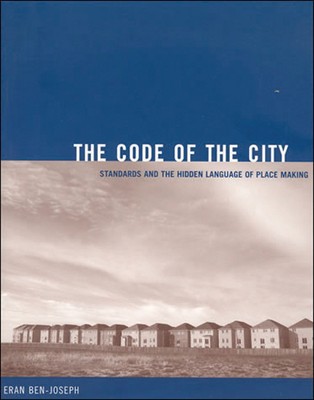
- We will send in 10–14 business days.
- Author: Eran Ben-Joseph
- Publisher: MIT Press
- ISBN-10: 0262524457
- ISBN-13: 9780262524452
- Format: 17.9 x 22.7 x 1.6 cm, softcover
- Language: English
- SAVE -10% with code: EXTRA
Reviews
Description
Standards and codes dictate virtually all aspects of urban development. The same standards for subdividing land, grading, laying streets and utilities, and configuring rights-of-way and street widths to accommodate cars (rather than pedestrians) have been adopted in many areas of the world regardless of variations in local environments. In The Code of the City, Eran Ben-Joseph examines the relationship between standards and place making. He traces the evolution of codes and standards and analyzes their impact on the modern city and its suburbs, arguing that it is time for development regulations to reflect site-specific and localized physical design.
Standards and codes were meant to bring order and safety to the city building process. But now, Ben-Joseph argues, these accumulated rules and their widespread application illustrate a disconnect between the original rationale for their existence and their actual effect on the natural and human environment. To discover how this separation of codes from local conditions came about, he looks at the origins of urban standards and their use, from early civilization through the rapid urbanization of the nineteenth century. He provides examples that demonstrate how standards have shaped residential developments and reshaped the natural landscape. And he considers alternatives for the future--innovation and de facto deregulation by private developers, new design technologies, and place-based regulations reflecting local conditions. Standards, writes Ben-Joseph, will continue to shape the built environment, but they must be flexible enough to allow for innovation and contribute to the development of sustainable and desirable communities.
EXTRA 10 % discount with code: EXTRA
The promotion ends in 20d.02:31:24
The discount code is valid when purchasing from 10 €. Discounts do not stack.
- Author: Eran Ben-Joseph
- Publisher: MIT Press
- ISBN-10: 0262524457
- ISBN-13: 9780262524452
- Format: 17.9 x 22.7 x 1.6 cm, softcover
- Language: English English
Standards and codes dictate virtually all aspects of urban development. The same standards for subdividing land, grading, laying streets and utilities, and configuring rights-of-way and street widths to accommodate cars (rather than pedestrians) have been adopted in many areas of the world regardless of variations in local environments. In The Code of the City, Eran Ben-Joseph examines the relationship between standards and place making. He traces the evolution of codes and standards and analyzes their impact on the modern city and its suburbs, arguing that it is time for development regulations to reflect site-specific and localized physical design.
Standards and codes were meant to bring order and safety to the city building process. But now, Ben-Joseph argues, these accumulated rules and their widespread application illustrate a disconnect between the original rationale for their existence and their actual effect on the natural and human environment. To discover how this separation of codes from local conditions came about, he looks at the origins of urban standards and their use, from early civilization through the rapid urbanization of the nineteenth century. He provides examples that demonstrate how standards have shaped residential developments and reshaped the natural landscape. And he considers alternatives for the future--innovation and de facto deregulation by private developers, new design technologies, and place-based regulations reflecting local conditions. Standards, writes Ben-Joseph, will continue to shape the built environment, but they must be flexible enough to allow for innovation and contribute to the development of sustainable and desirable communities.


Reviews